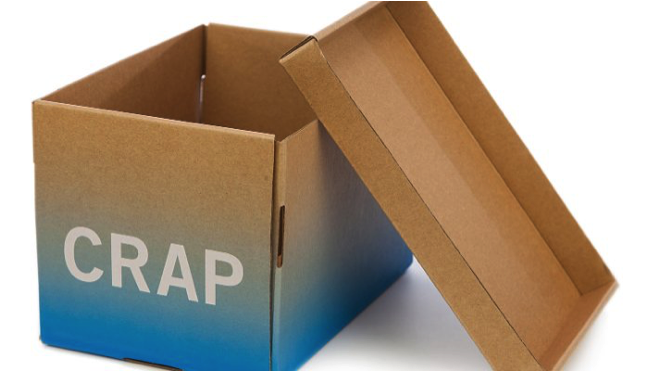

If you’re a brand selling on Amazon through their retail channel, chances are you’ve heard about CRaP – which stands for Can’t Realize any Profit, Amazon’s label for items that are structurally unprofitable for them to sell in their retail channel.
In a transcript of their recent podcast, Profitero’s Keith Anderson speaks with Andrea Leigh who spent 10 years at Amazon in their Seattle headquarters, most recently as general manager and category leader for the Canadian division, growing Amazon.ca to become the largest eCommerce retailer in Canada.
Q: As we often do, maybe you can tell us a little bit about your experience at Amazon and then a bit about what you’re up to now.
I left Amazon about a year and a half ago having spent 10 years there. My bigger roles were around working on the Amazon Fresh push to go national and working on the grocery launch for Amazon.com back in 2007/2008. My most recent role before I left, and which I held for three years, was category leader and GM for the hard goods categories at Amazon Canada. I also led the launch of consumables and soft lines in Canada, ran the Prime program for Canada, and developed and ran Canada’s first Cost Out program, which most vendors probably know as their CRaP program. Then I was responsible for our transportation and import business, and I grew Amazon Canada to the largest e-tailer in Canada.
Since leaving Amazon, I’ve been consulting with businesses and the common thread is an extension of what I was doing when I worked at Amazon. I worked mainly with high growth startup businesses, from training on how to work with Amazon, as well as go-to-market strategies for brands that aren’t yet working with Amazon.
What I do probably most often is business audits and strategies, really trying to take their Amazon business to the next level or their eCommerce business to the next level. How do they do that? Where are they blocked? What best practices are they not implementing? Then putting together strategies for those brands. That’s what I’ve been doing for the last year and a half.

Q: You recently published an awesome piece on LinkedIn, Why Your Brand Should Care About Amazon’s Item Level Economics, i.e., CRaP. I would love to get your perspective about where along that continuum between pure growth versus a balance between growth and profitability Amazon stands, especially for consumables.
We used to live in a world where brand could begin selling on Amazon and, if they had a good product and they had a good price point, they could be really successful on the site just by nature of Amazon’s automation and the flywheel effect of the more people that buy it, the more people that look at it, the more it’s marketed to customers. You used to be able to just have a really nice trajectory just by having a good price point and being on Amazon, and I don’t think that’s the case anymore, and for a couple of reasons.
One is that it’s just a super crowded marketplace. There’s so much assortment on Amazon now and in Canada, we were signing up thousands of items a week in various categories. The other reason is that Amazon’s getting really selective about what they’re willing to feature to customers, and that points to the question around profitability. We’re not in a land grab environment anymore where everyone’s just trying to take share and grow customer base. Amazon especially I think is focusing way more on profit than they ever have in the past.
Unlike other retailers who will often look at a brand’s economics as a whole brand, or as a portfolio, or as a category and say, “In some of these items we lose money, but in others we make a lot, and so on the whole this brand is profitable”, Amazon doesn’t look at their economics that way. Every item has to stand on its own, which has always been their philosophy, but I think they’re getting more aggressive about enforcing that both internally with their buyers who work with the vendors, and then also externally.
One of the reasons I wrote that article was because as I work with these brands, there’s so many things that I talked about there that they didn’t know. These things don’t need to be secrets to vendors. In fact, it’s better for Amazon if they’re not secrets because it definitely encourages brands to help partner with them to figure out how to help Amazon be more profitable through understanding the impact of their brand. I think the pendulum is definitely more on the profitability side, particularly for consumables. You can’t have categories that are structurally unprofitable.
In the earlier days I think it was about trying to get customers, trying to get customers to use Subscribe & Save, helping educate customers that Amazon sells groceries online and getting them to think of Amazon first for consumables. Now I think it’s about really fine-tuning that business and figuring out how to make it economically viable for the long-term.
Q: Could you tell us about the role that the retail business and the grocery and consumables business plays in the overall financial model at Amazon?
Strategically, the consumables business provides Amazon with repeat high-frequency traffic to the website. When you think about all the categories that Amazon plays in, every one of them serves a different function. This is definitely how people think about it internally, but if you think about the baby category, you’re selling baby products. You’re trying to capture the customer that’s a new parent. I think all the studies show that when a consumer becomes a new parent, all of their brand loyalties are up for grabs. That’s when the most brand switching occurs, that’s when the most behavior switching occurs, shopping behavior changes.
The role of the baby category, for example, is to capture that new parent and get them to shop on Amazon. There are programs around discounts for diapers and wipes and free Prime trials that Amazon is using to try to capture that customer at that point in time. The assortment that Amazon is able to offer in that category is amazing, and having stuff delivered to your house when you’ve got a new one at home is pretty powerful. That’s the role of the baby category, but you can think about every category in that way: they’re serving a function of a greater purpose which is, how do you get a customer to shop on Amazon for everything?
Thinking back to when Amazon was heavily weighted towards media and electronics, the electronics customer just doesn’t shop that often. You come and you buy your big screen TV, and then maybe a few months later you come and you buy a computer accessory or something, but it’s not high-frequency traffic. When you think about the role of consumables, those customers are visiting the site much more frequently than customers for other categories, or shopping in that category more often than other categories. From a strategic perspective, consumables is serving the function of just getting customers to the site, driving traffic over and over, repeat high-frequency traffic.
Amazon is committed to a longer term goal around how can we be in the customer’s house all the time, how can we be the first touch point.
Q: I would love to drill into some of this detail now. If people haven’t read your post on LinkedIn, they definitely should. Why don’t we start with the definition of CRaP and why it’s such a negative thing.
CRaP is the term that Amazon uses to discuss or describe items that structurally are unprofitable for them to carry on the website. CRaP stands for Can’t Realize Any Profit and it was actually a term that the finance department came up with in my earlier days at Amazon. It was just meant to be this funny joke internally and, lo and behold, 10 years later we’re using it in industry and buyers at Amazon are using it with brands. I think it’s a pretty common term, or at least you’ve maybe heard of it if you work with Amazon.
The designation comes from the underlying economics at an item level. It’s basically Amazon saying, “Even under the best circumstances this item is structurally unprofitable.” Which means even if they order it in quantities that provide discounts, even if this vendor is spending marketing dollars and has a good accrual or co-op program with Amazon, the item still loses money on a per unit basis.
What I think is really scary is that there’s been so much evolution of this program internally at Amazon within the last couple of years, but so little of it is being communicated to vendors. If a brand really understood what happens to your items once they get this label, they would really work hard to not get the label. I think the communication around it is just pretty poor.

Q: A little more transparency might, at least, help brands not make it worse. What are some of the challenges if you have an item that’s pre-CRaP or full CRaP?
I think the biggest one that isn’t transparent, and which I’ve never received actual verbal confirmation of but I’ve seen it happen on the site, is that the items fall out of free marketing, which is all of Amazon’s automation and personalization. Items with CRaP designation are not included. That’s the most powerful marketing that Amazon has. The flywheel basically stops spinning and that’s really scary, especially for brands which are in the top 100 sales ranking. That’s what’s keeping them up there. That flywheel means more people look at the product, more people buy the product, Amazon markets the product more, and, more importantly, that’s free marketing.
Then when you think about it from Amazon’s perspective, why would they keep marketing items that don’t make money for them? That just doesn’t make any sense for them. There are rooms and rooms full of people who just work on those algorithms around automation and personalization. There’s so much automation and you are just pulled from it. That’s why I feel like Amazon should be more transparent about it because brands would be motivated to help the problem.
Then the other ones are around marketing services, so sponsored products, headline search. Amazon Marketing Service (AMS) is the best bang for your buck on Amazon right now. If you are a brand working on Amazon, you should be using AMS, but If you have items that have the CRaP designation, you can’t market them through that program. Equally, only items in good standing can be included in Amazon’s Subscribe & Save program.
Subscribe & Save means that you get regular predictable orders. It means Amazon’s forecasting system can get really smart about your products. It means that the discount that you have to offer to the customer, you pay that in order to acquire really loyal customers and they commit to a continuous stream of orders sometimes indefinitely. You really want to be in that program and you can’t if you have items that have the CRaP designation.
Another one that I didn’t talk about in my article is around the Add-On program – items that you can only buy if you hit a $25 basket. You absolutely cannot check out with just the single item even if you’re a Prime customer and the reason that Amazon puts items in that program is because they either are CRaP or they’re on the bubble, pre-CRaP.
Q: What are some of the root causes of CRaP? If you’re digging in, what should you be exploring?
It totally depends on the brand and the type of item that you’re selling, but I can tell you some that came up over and over again when I was there and still come up over and over again when I work with brands. It’s not always an easy fix, but more simple in nature for people to understand. It’s around anything that’s driving Amazon to have to mark the product down a lot. It’s not price matching anyone, it’s just lowering the price because they have too much inventory.
Amazon doesn’t like to have too much inventory, and the marking down process is automated. That’s a simple one to understand. Make sure you don’t send Amazon too much product. Then the really common one in consumables is low cost-to-weight ratio products. Think bottled water. The retail price is really low, but it weighs a lot, and that means it’s going to cost Amazon a lot to ship it and it is probably, in the case of bottled water, going to cost them more to ship it than they can actually retail the item for. You can already do the math on that and figure that Amazon’s going to be unprofitable. Some items are structurally really difficult for eCommerce, or at least for Amazon’s eCommerce, because they offer free shipping to customers with the threshold.
That is what programs like Pantry are trying to help with. If you can put it all in one box and then ship it to a customer, maybe you can blend the bottled water with something else, like high-end beauty, that has better economics and, as a whole, the basket is profitable. Because Amazon’s not stupid. They have to sell diapers, they have to sell wipes, they have to sell a lot of products that can tend to be really unprofitable online due to the cost of shipping.
Another one I see a lot is price matching, Amazon price matching another retailer. It’s usually Walmart selling it for a really low price, and that’s a tough one because Amazon’s not going to stop price matching. That’s core to their belief system in terms of customer trust and you don’t want to find it at a lower price somewhere else. They’re not going to come up with that lowest price on their own, but they will match.
What I’ve seen some more innovative brands do is come up with a slightly differentiated product and sell that one on Amazon and sell Walmart a different one. You see it a lot in kitchen appliances. It has to actually be a SKU with different bells and whistles, or at least slightly different bells and whistles. Then have one at Walmart and have one at Amazon. Amazon doesn’t have to match because it’s not really the same product and customers can see it’s not the same product, but you sacrifice some growth there because customers might go buy the Walmart one.
Q: You’ve given us a lot to think about in terms of near term fixes, some of which are straightforward, but maybe not easy, and some longer term fixes. One of the big ideas in your piece was about really designing for online, and I think that obviously is a long term idea. Can you just expand on that idea and help some of the brands listening understand what that would involve?
I was working with a kitchen appliance brand recently and they have really heavy items. We discovered that if they were able to reduce the weight even by 10%, it would be a viable product on Amazon. Really going back to the drawing board in terms of product development and figuring out how to reduce weight and how to reduce bulk.
There’s reduced cost in everyone’s supply chain in the online channel. It’s not just Amazon. It’s something that a lot of hard goods manufacturers and consumables manufacturers never really had to spend a lot of time thinking about previously because you would just deliver it to the grocery store and the customer would then just pick it up off the shelf.
The most effective brands on Amazon that I’ve worked with are ones that have a cross-functional team assigned to Amazon. Maybe not full-time, but they’ve got somebody from product development, someone from sales, someone from operations all working together on the Amazon account. The brands that I see really struggle are the ones where the sales team that’s working with Amazon has no connection whatsoever to product development. They can’t go back and rejigger pack sizes or anything like that, and that’s just not setting your team up for success.
Q: Andrea, this has been really interesting – thank you so much for your time and insight. If people want to reach you, what’s the best way to find you?
You can find me on LinkedIn.
To hear other industry thought leaders discuss the latest eCommerce trends impacting the CPG and retail sector today, visit the Profitero Podcast Series.


























